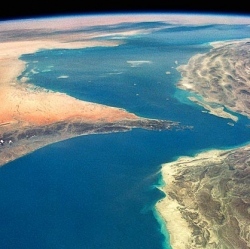
Scientists have been studying a conceptual spacecraft designed to deflect dangerous asteroids before they reach us. Called the Hypervelocity Asteroid Mitigation Mission for Emergency Response (HAMMER) vehicle, the 9-m (30-ft) tall, 8.8-ton spacecraft is a modular construct that can either ram an asteroid directly or act as a bomb carrier to deliver a nuclear warhead.
According to NASA, no one has been killed by an asteroid or meteorite in over a thousand years, but there have been many close calls. In addition, exploration of the Solar System, Earth’s geological history and even recent historical events like the Tunguska Event show that an asteroid strike could have catastrophic effects, possibly even the kind of mass extinctions not seen since the dinosaurs died out 65 million years ago.
With this in mind, a collaborative study by NASA, the National Nuclear Security Administration (NNSA), the Lawrence Livermore National Laboratory (LLNL) and Los Alamos National Laboratory is looking into how an unmanned spacecraft could handle an Earth-threatening asteroid. For theoretical purposes, the scientists chose the asteroid 101955 Bennu, which is an asteroid that passes the Earth’s orbit on a regular basis and is calculated to have a 2,700 to one chance of hitting the Earth on September 25, 2135.
In addition to this, Bennu is massive with a 500-m (1,600-ft) diameter, that’s greater than the height of the Empire State Building, and a weight of 79 billion kg (175 billion lb). LLNL says that if it struck the Earth, it would be the equivalent of a 1,200 megaton bomb – 80,000 times more powerful than the atomic bomb used on Hiroshima in 1945.
The purpose of the study is to balance the requirements of intercepting and deflecting an asteroid while it is still far from Earth against that needed when it’s very close. The study took three different approaches with NASA handling the former, while LLNL dealt with the latter plus emergency response if the first two fail. Also, they looked at two possible deflecting strategies – a kinetic impact using the HAMMER probe’s inertia to shift the asteroid, and using a nuclear warhead.
According to LLNL, the preferred method is to hit the asteroid with a kinetic impactor while it’s still far away. And the farther the better. This is because even a minuscule change of trajectory while the asteroid is hundreds of millions of miles away will add up to a miss of many millions of miles when it reaches the Earth, but the closer it is, the greater the deflection needed and the smaller the result.
